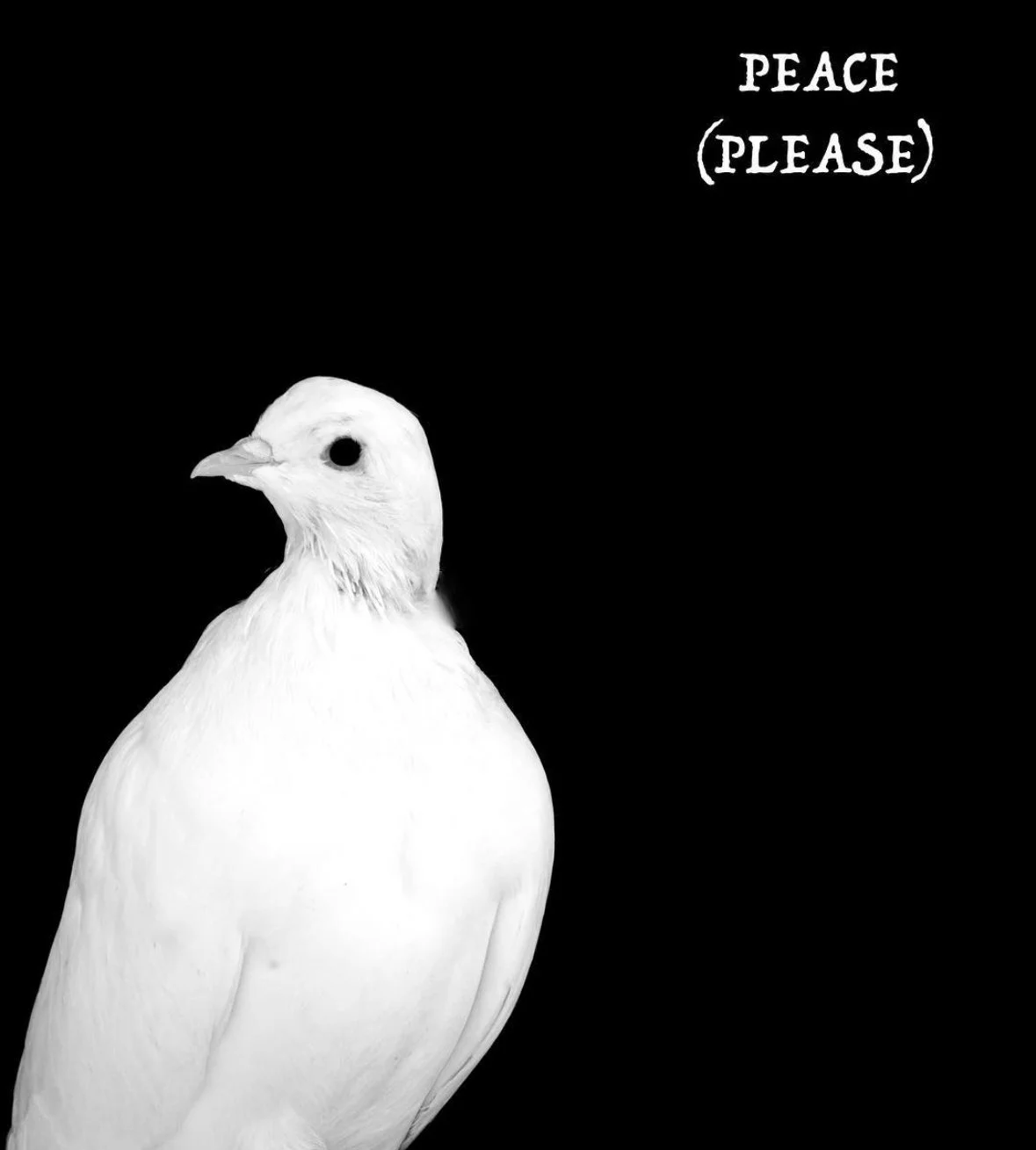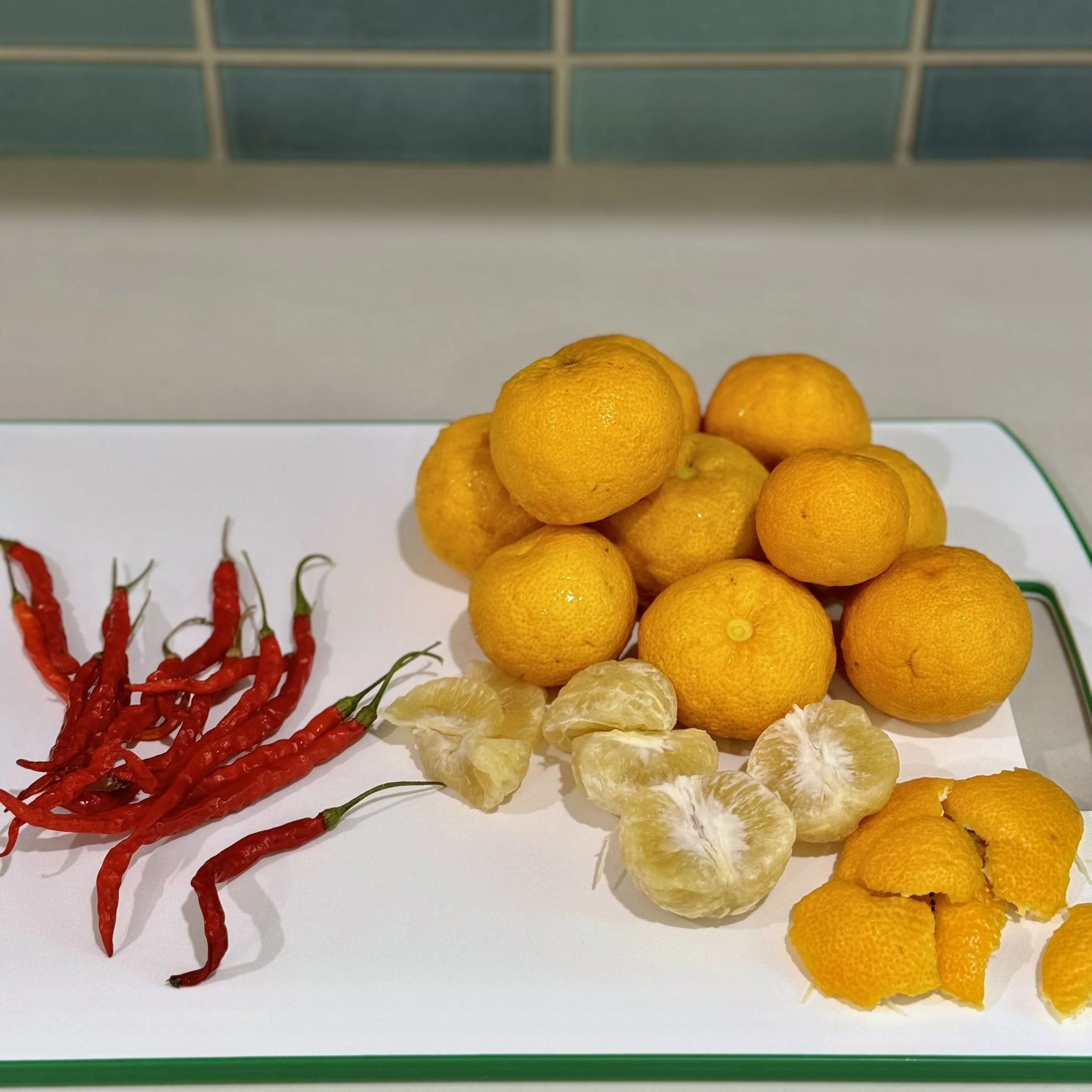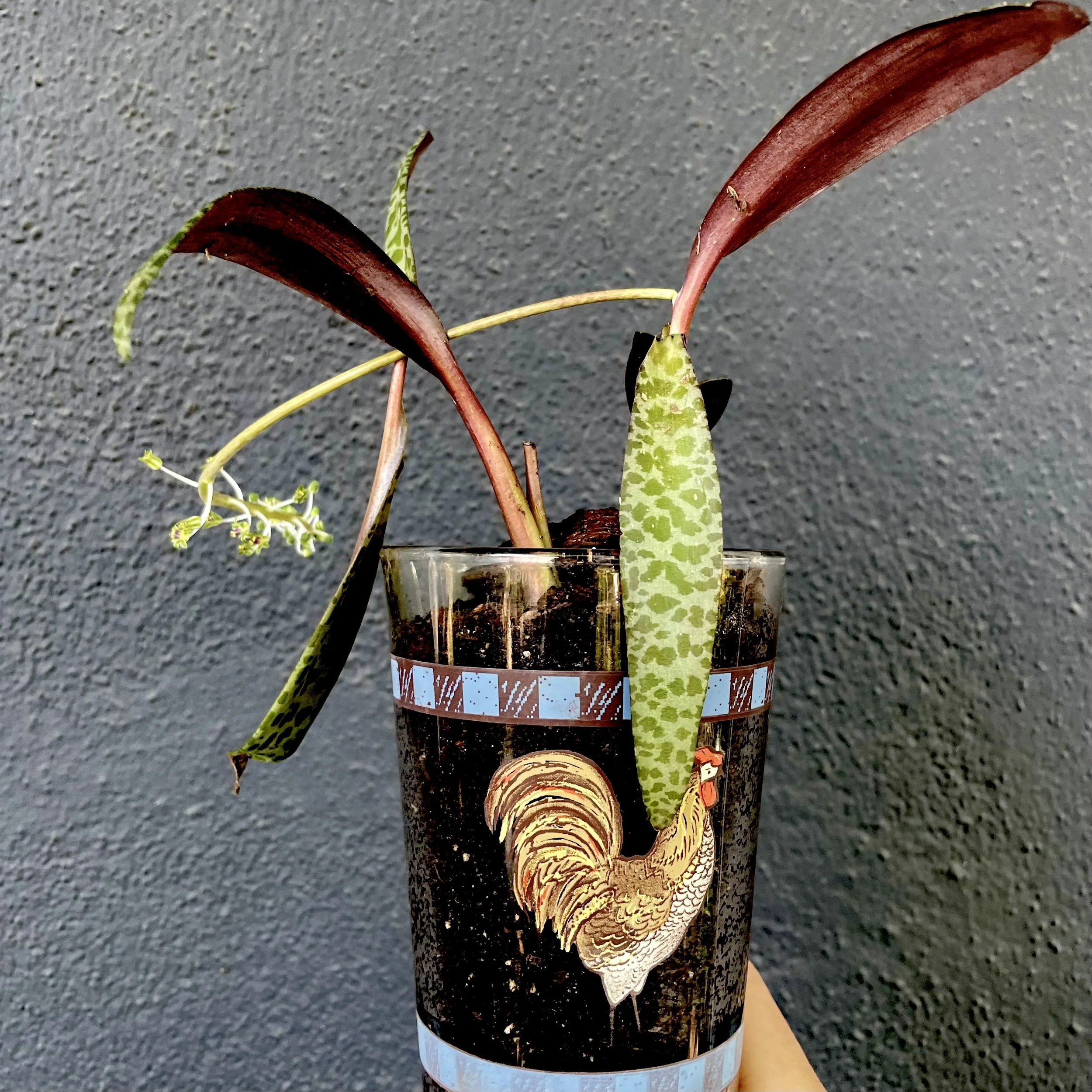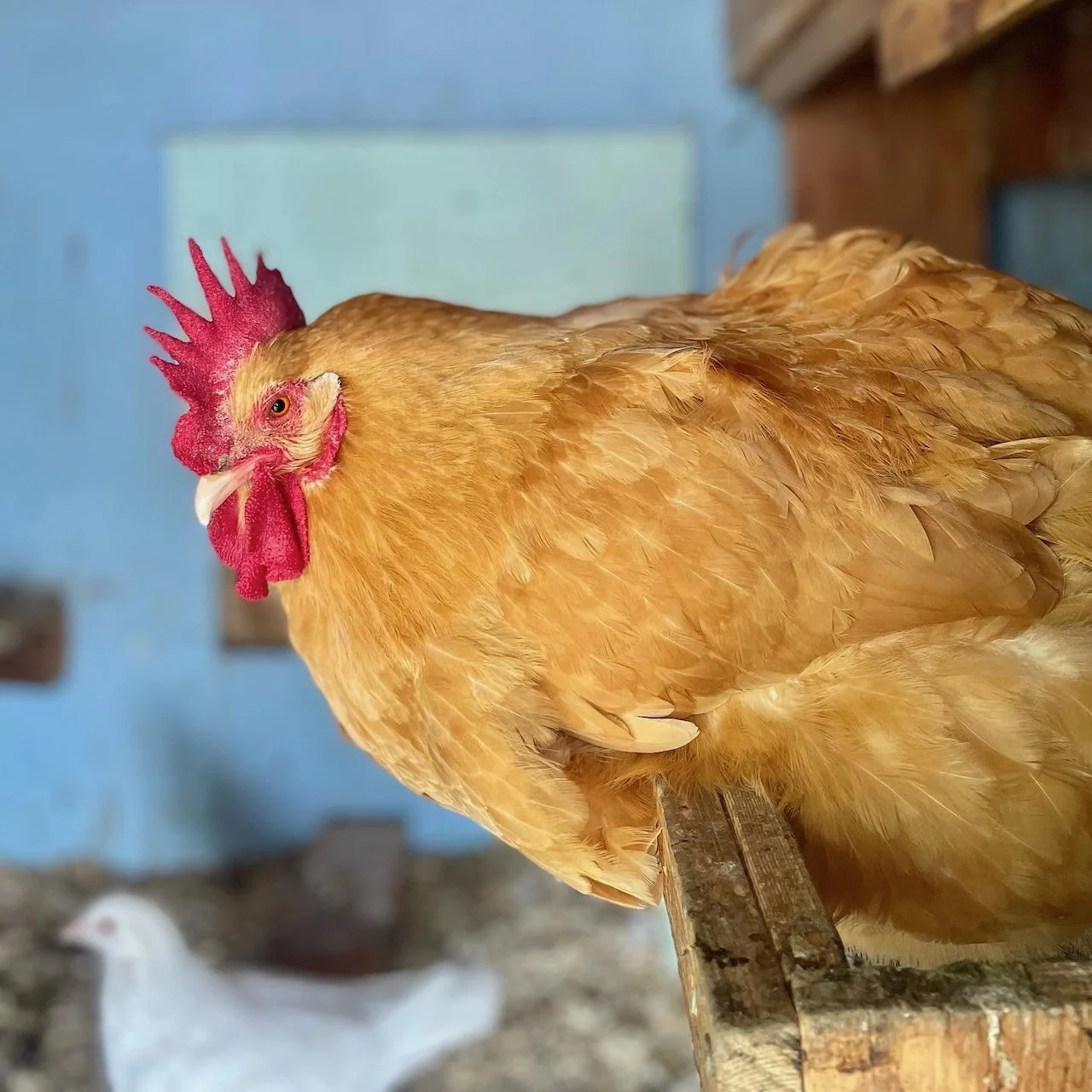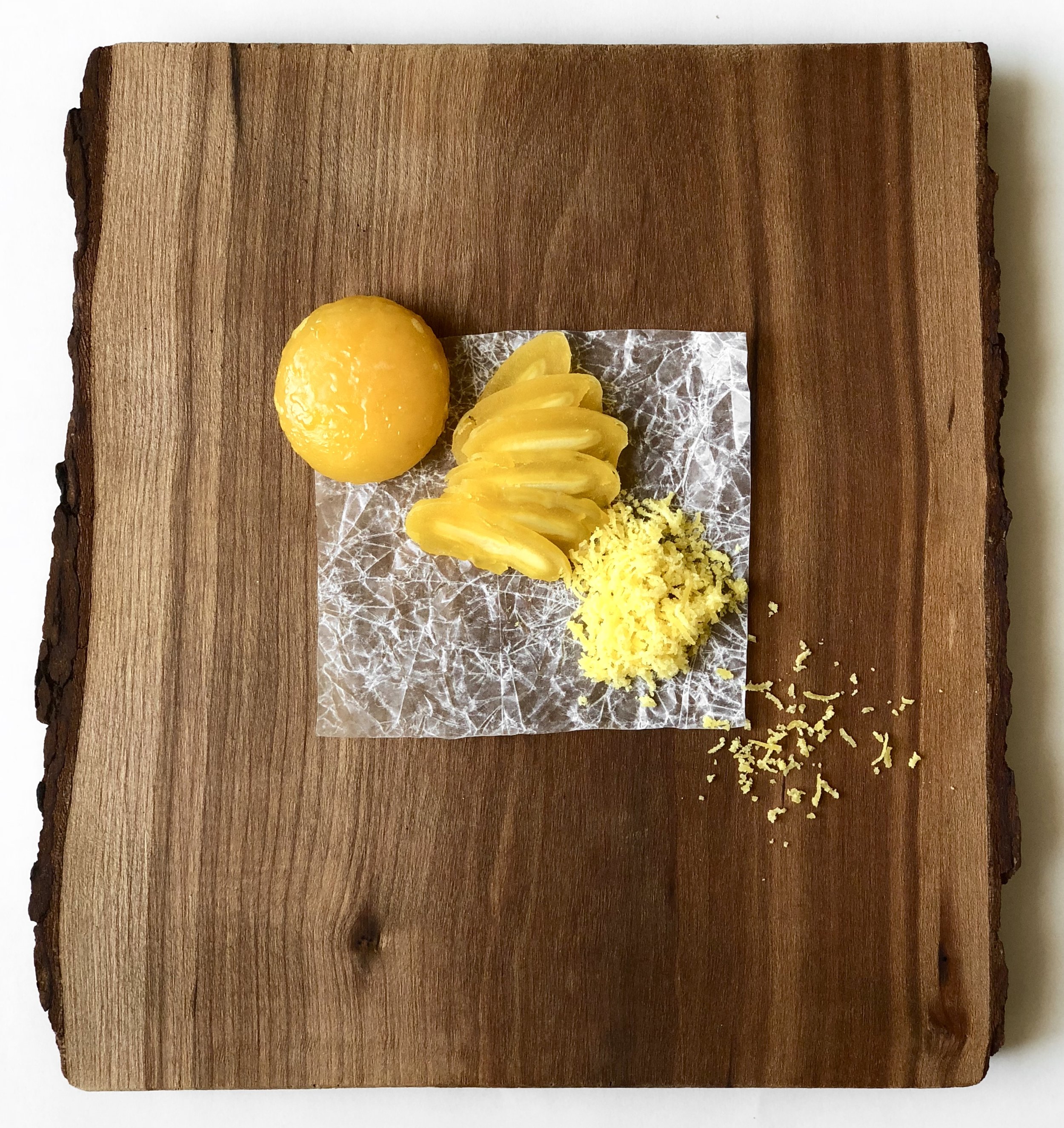There should be a James Beard Award given to parents of budding cooks who suffer through those early years of dry blueberry muffins and curdled hollandaise sauce.
In middle school I learned how to cook from my parents and their copies of Joy of Cooking, The Frugal Gourmet, and another mystery book used so often the cover fell off and the pages were crispy with waffle batter.
By high school, having developed a serious interest in cooking, I was gifted with my first cookbook, The New Basics by Julee Rosso & Sheila Lukins. I treasured it and kept a slip of paper inside that listed all the recipes I'd tried.
I still ate meat back then and my favorite recipe in the book was Moroccan Chicken. I remember feeling that its ingredients—dried dates, Greek olives, and preserved lemons—were sophisticated and my parents coming home from work to this dish would be impressed. And they were.
Less than a year after high school graduation I had moved to and dropped out of culinary school. (A disaster story for another day.) Six years later I became vegetarian and Moroccan chicken was long forgotten. But with all the meat alternatives now available, even back home in the little grocery stores where 25 years ago I couldn't find dried dates, "chicken" recipes are back on the menu.
Do I have a moral dilemma, like some vegans/vegetarians, about eating foods meant to taste like meat? Not in the least. Do I have health concerns about eating foods made from processed plant proteins. Barely crosses my mind. I care about animals, I care about my health, and I care about delicious food, and I feel that I can have it all with no apologies or justification. I'm greedy like that!
For this recipe I use Quorn brand Vegan Chik'n Cutlets. The primary ingredient is mycoprotein, derived from fungus. The cutlets have a firm texture and great flavor. If you're ever cooking for meat-eating friends, I think they'll be impressed. It's a far cry from the jiggling blob of tofu they feared you'd be serving. Keep in mind these don't have the fat content of real chicken, so any adapted recipes will likely require additional fats/liquids for moisture.
Okay, I'm about to shut up and give you the recipe, but first a quick note on what you're about to get into. Does this dish taste authentically Moroccan? I have no idea, I've never been to Morocco. But it does have an exciting flavor profile: rich and intense but well-balanced, with the sticky sweetness of dates yielding to the tangy lemon and slight bitterness of the olives. Contrast the heartiness of this main dish with a light side of couscous drizzled with olive oil and tossed with fresh chopped parsley and a squeeze of lemon juice.
Finally, a note on the preserved lemons that make the Moroccan chicken so special. Preserved lemons are wonderfully versatile and deserve a place in your fridge. Fresh lemons aren't a substitute because they are overpowering. You can buy preserved lemons at Trader Joe's, Whole Foods, or Amazon or just make them at home. They are as simple as can be, but take a couple weeks to morph from fresh lemons to the milder, saltier, embalmed version. Here's a recipe. I preserve mine in the refrigerator for at least 2-3 weeks with a cinnamon stick.





